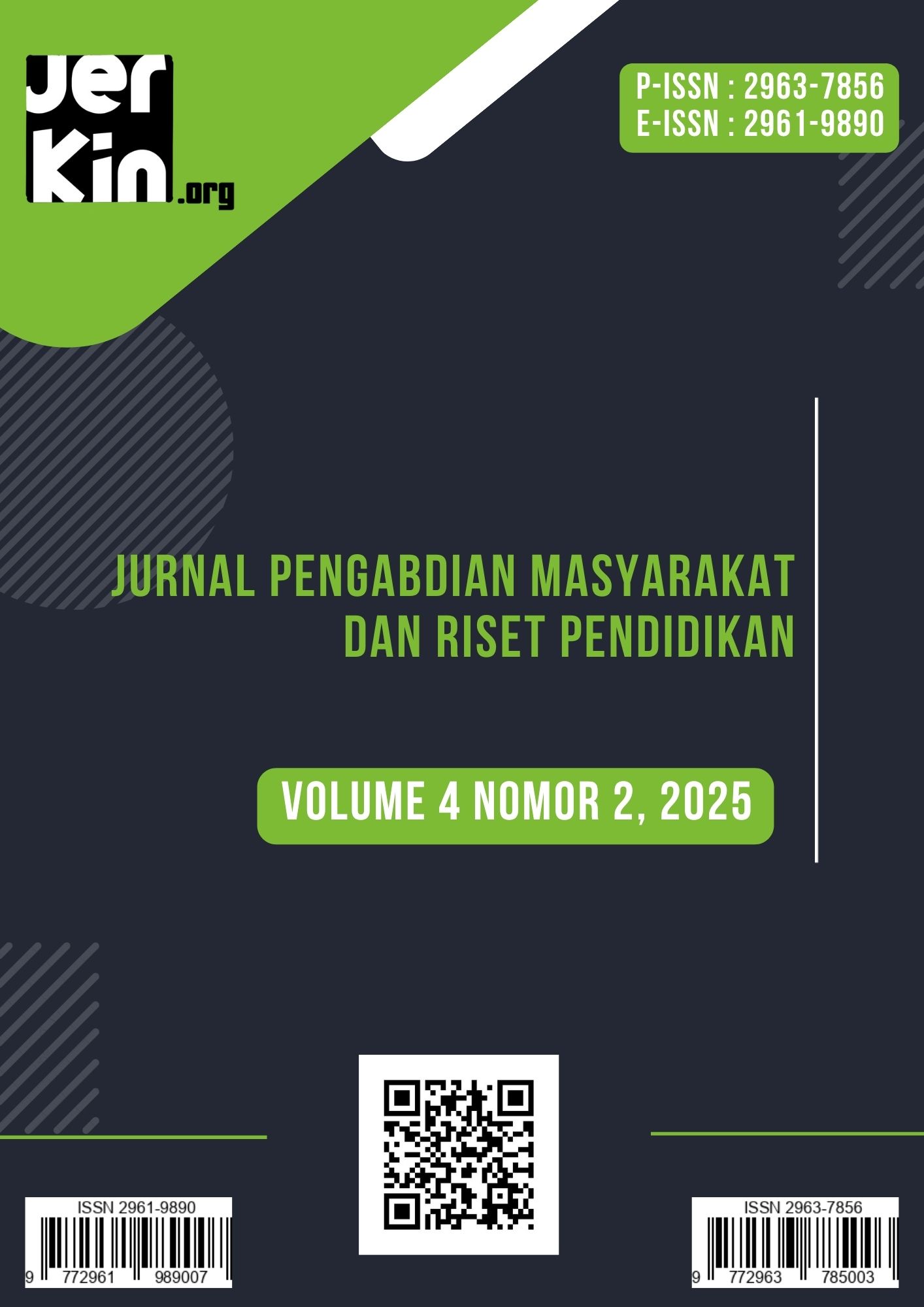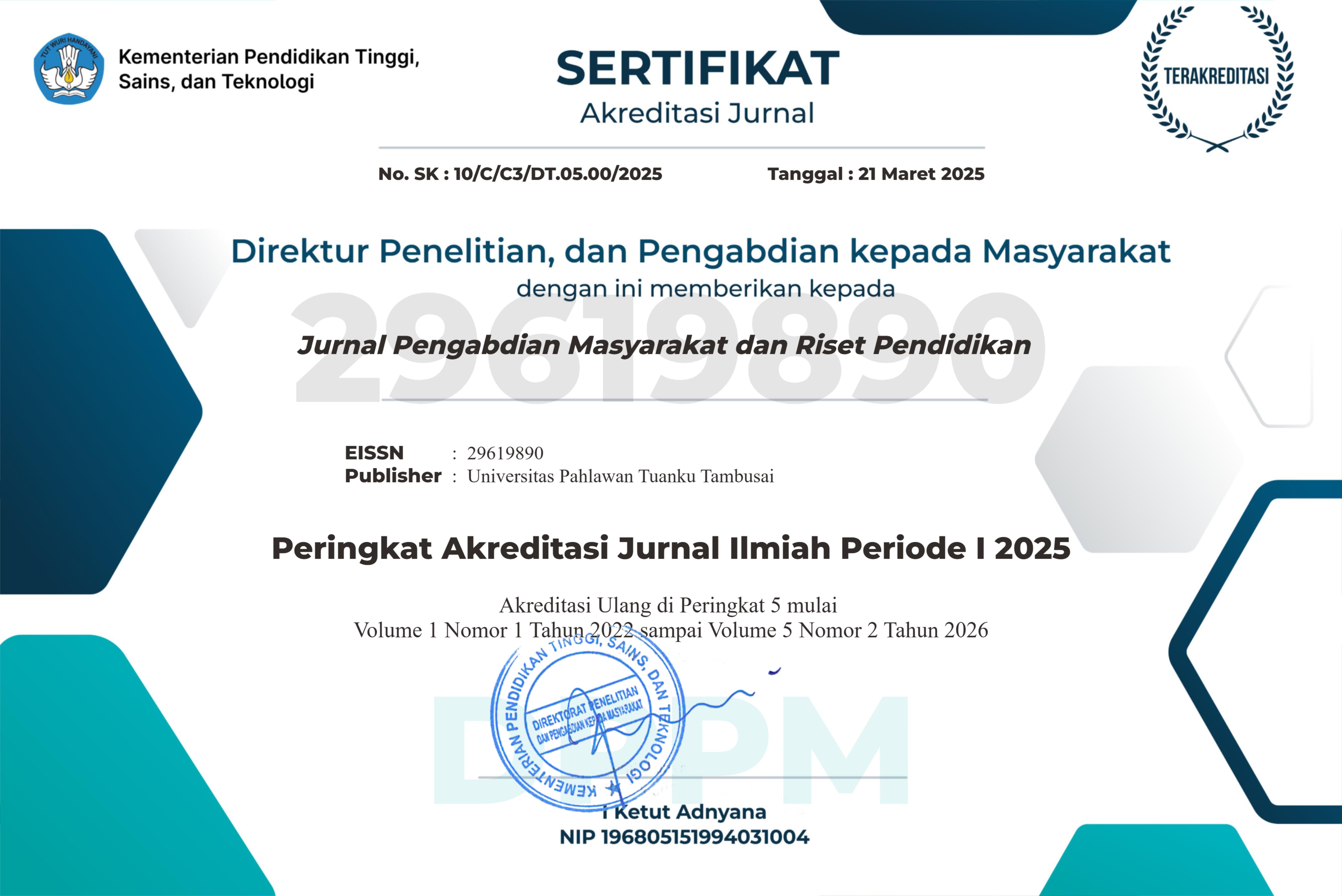Pengaruh Model Pembelajaran Cooperative Integrated Reading and Composition (CIRC) Terhadap Hasil Belajar Ilmu Pengetahuan Sosial (IPS) Siswa Kelas VIII di SMP Swasta Tamansiswa Pematangsiantar Tahun Ajaran 2025/2026
Penelitian
DOI:
https://doi.org/10.31004/jerkin.v4i2.3346Keywords:
Cooperative Integrated Reading and Composition (CIRC), Learning Outcomes, Social Studies.Abstract
This study aims to determine the effect of the Cooperative Integrated Reading and Composition (CIRC) learning model on student learning outcomes in Social Sciences (IPS) subjects in class VIII of Tamansiswa Private Junior High School Pematangsiantar in the 2025/2026 Academic Year. This type of research is a quantitative experiment with a Nonequivalent Control Group Design. The research sample consisted of two classes, namely the experimental class using the CIRC learning model and the control class using the lecture method. The data collection technique used learning outcome tests in the form of pretests and posttests. Data analysis was carried out through normality tests, homogeneity tests, and t-tests using the SPSS 26 application. The results showed that there was a significant increase in student learning outcomes after the implementation of the CIRC learning model. The average pretest score of the experimental class was 48.41, increasing to 72.76 in the posttest, while the control class increased from 44.55 to 68.00. Based on the results of the t-test, a significance value of 0.000 <0.05 was obtained, which means that Ha was accepted and H0 was rejected. Thus, it can be concluded that the application of the Cooperative Integrated Reading and Composition (CIRC) learning model has a significant effect on student learning outcomes in social studies subjects.
References
Abdullah. (2016). Model Cooperative Integrated Reading and Composition dalam Pembelajaran. Jurnal Pendidikan, 3 (2), 73-81
Abdul Majid, Perencanaan Pembelajaran (Bandung: PT Remaja Rosda karya ,2009), 138
Abuddin Nata, Prespektif Islam Tentang Strategi Pembelajaran (Jakarta: Kencana, 2011), 181.
Agus Suprijono, Cooperative Learning Teori & Aplikasi PAIKEM, (Yogyakarta: Pustaka Pelajar, 2017), h. 149
Ahmadi,Abu dan Nur Uhbiyati. 2007. Ilmu Pendidikan. Jakarta: PTRineka Cipta.
Ahmad susanto, Teori Belajar Dan Pembelajaran Di Sekolah Dasar,(Jakarta :Kencana, 2016), h.5
Ahmas syarifuddin,” Penerapan Model Pembelajaran Cooperative Belajar Dan Faktor-Faktor Yang Mempengaruhinya”, Jurnal Ta’dib, 16 (1), 2011, h.125
Arikunto, Suharsimi. (2014). Dasar-dasar Evaluasi Pendidikan. Jakarta: Bumi Aksara.
Asma, Nur. 2009. Model Pembelajaran Kooperatif. Padang: UNP Press.Model Cooperative Integrated Reading and Composition (CIRC)
Asep Jihan dan abdul Haris, Evaluasi pembelajaran (Yogyakarta: Multi Pressindo, 2013), h.19
Catharina Tri Anni, Psikologi Belajar (Semarang: IKIP Semarang Press, 2004), h. 4.
Dewey, Jhon. 2003. Dasar-Dasar Ilmu Pendidikan. Jakarta: PT Raja Grafindo Persada.
Devi Nurina Purba Tanjung Pengaruh Model Pembelajaran Cooperative Integrated Reading and Composition (CIRC) Terhadap Kemampuan Menulis Teks Eksposisi Oleh Siswa Kelas VIII SMP Negeri 7 Pematangsiantar
Dimyati dan Mudjiono, Belajar dan Pembelajaran (Jakarta: Rineka Cipta, cet. 3, 2006), h. 3.
Fatihul Huda dan Asrul Anan, “Penggunaan Medel Pembelajaran Writing In The Here and Now Untuk Meningkatkan Hasil Belajar PAI Siswa Kelas X Di SMA Purwodadi”, Jurnal Al-Murabbi Vol.4, No. 1, (Desember 2018), h.
Downloads
Published
How to Cite
Issue
Section
License
Copyright (c) 2025 Daniel Andre Devany Sijabat, Binsar Tison Gultom, Debbi Petra Meyana Sitorus

This work is licensed under a Creative Commons Attribution-ShareAlike 4.0 International License.















